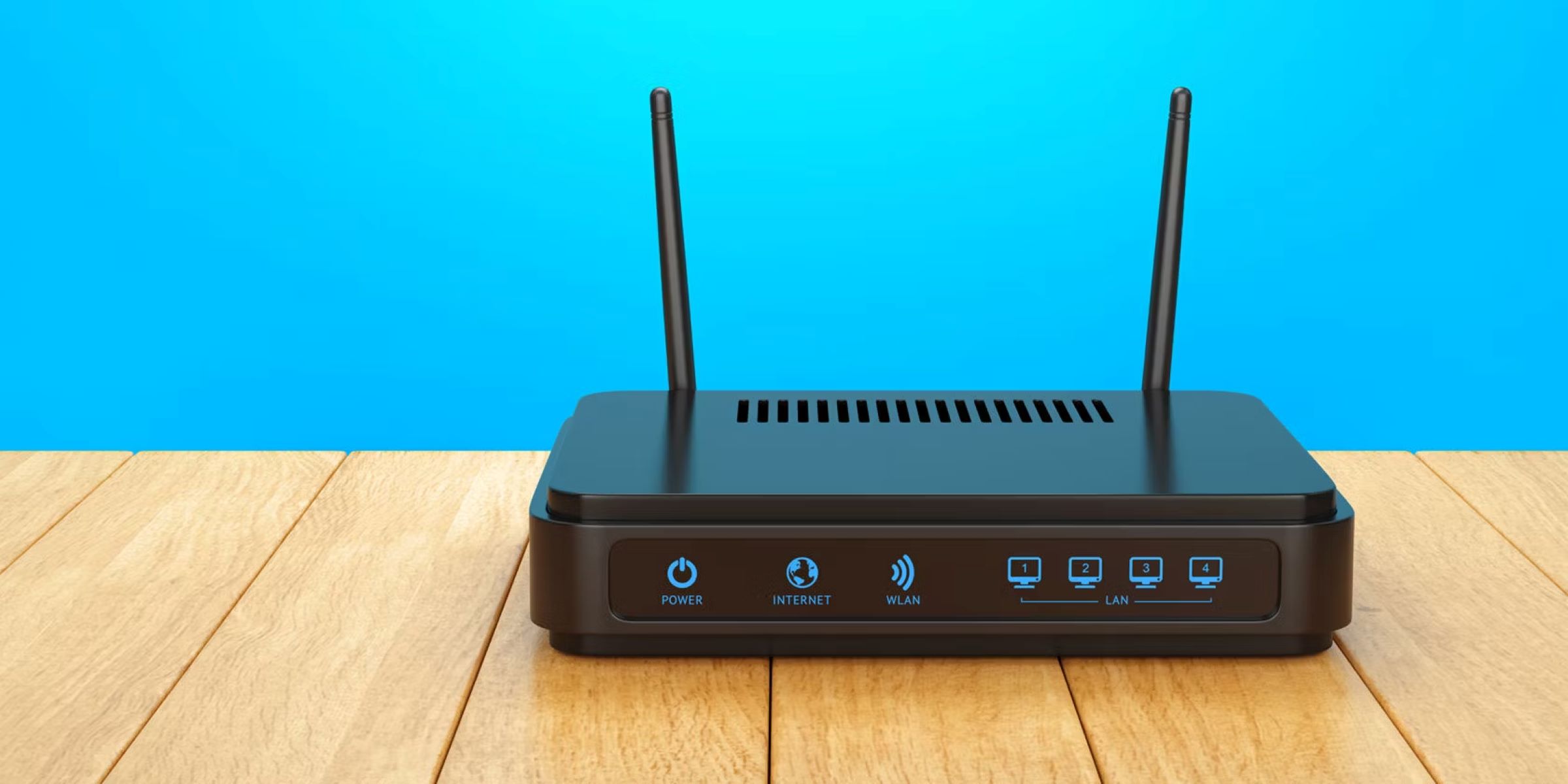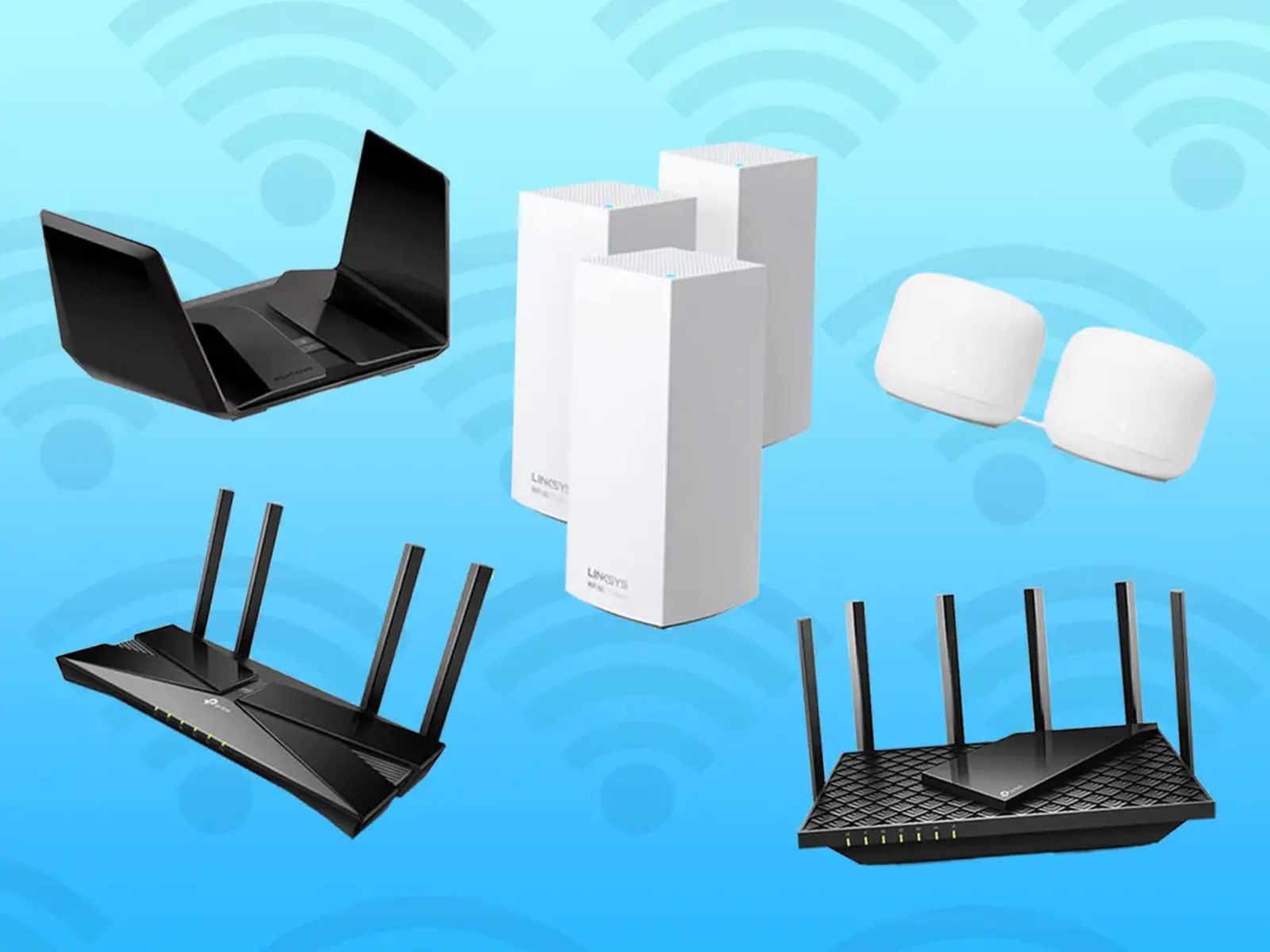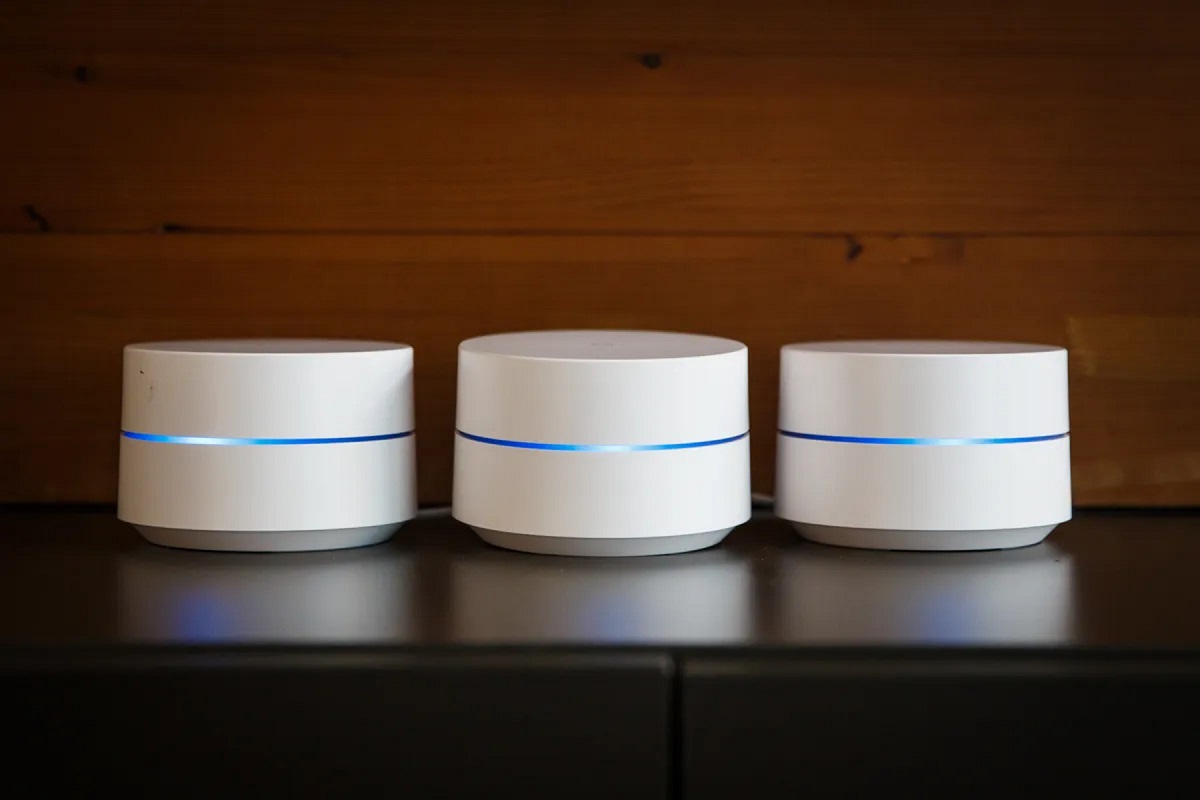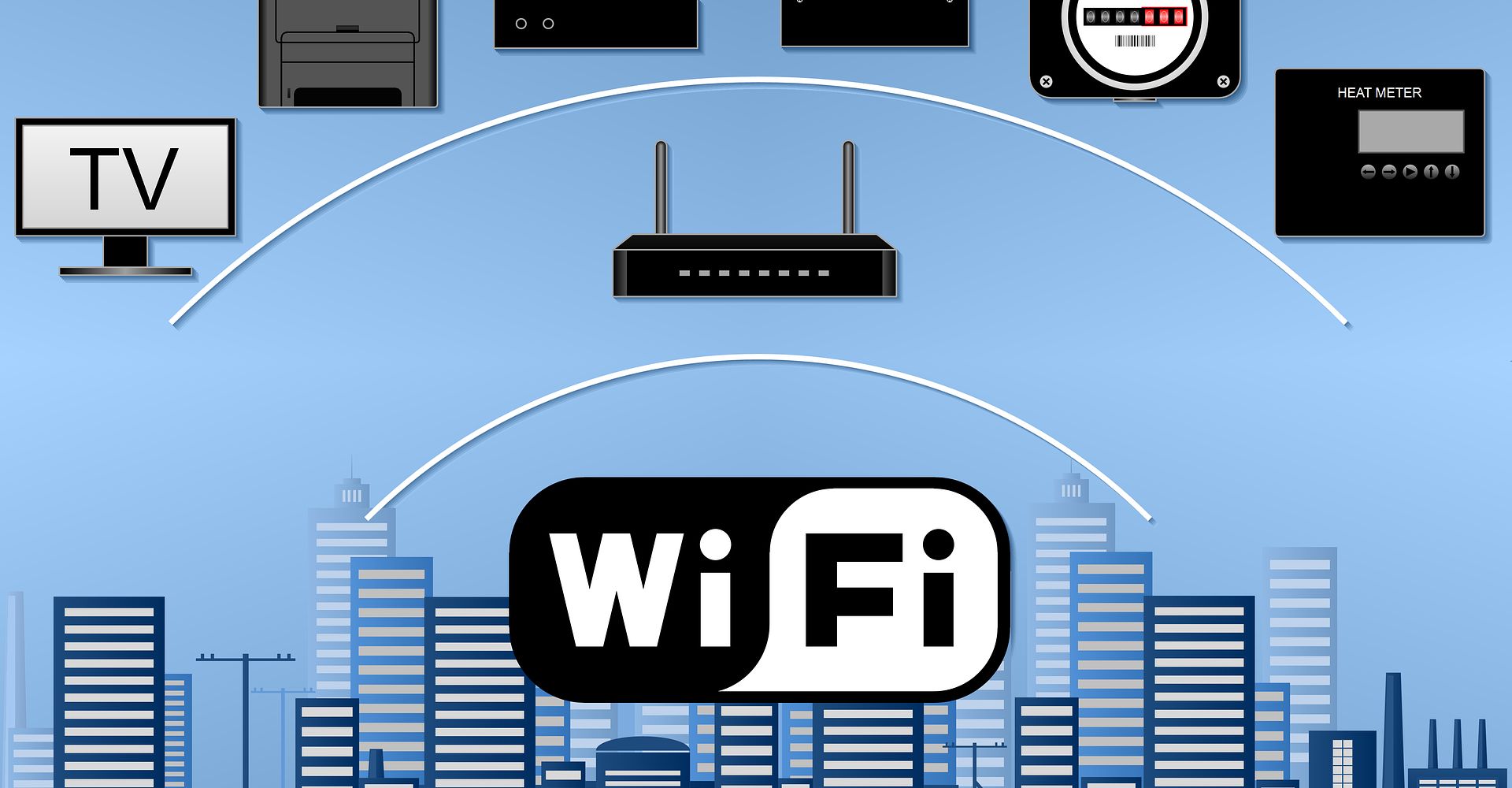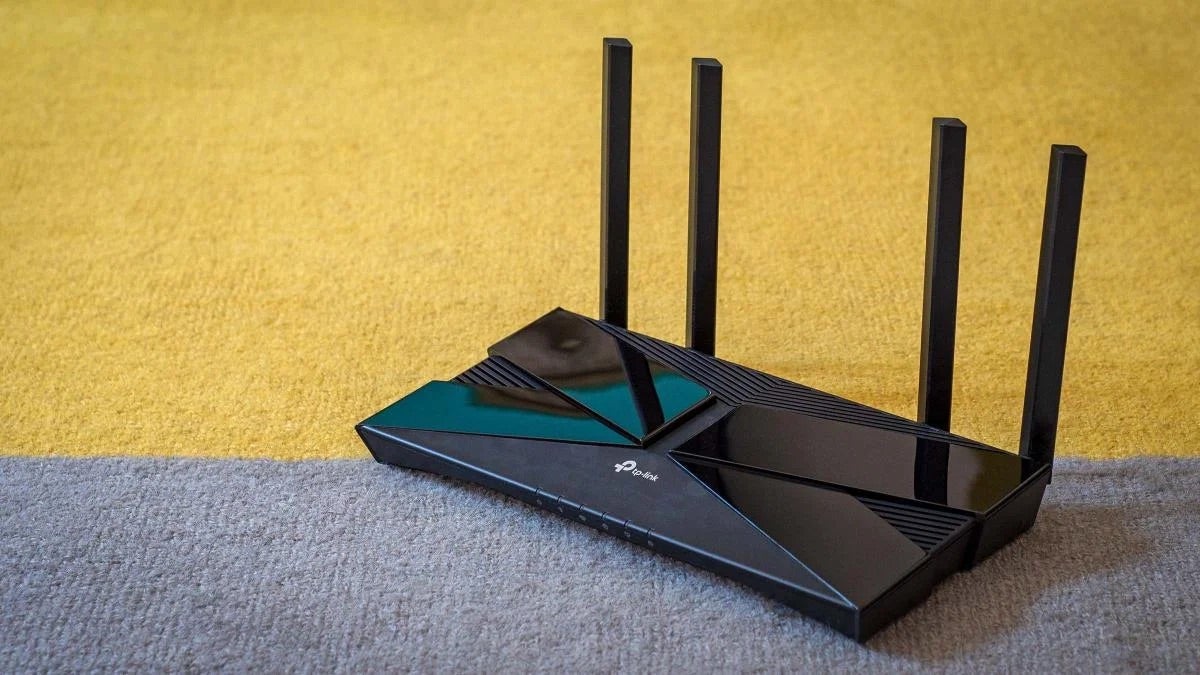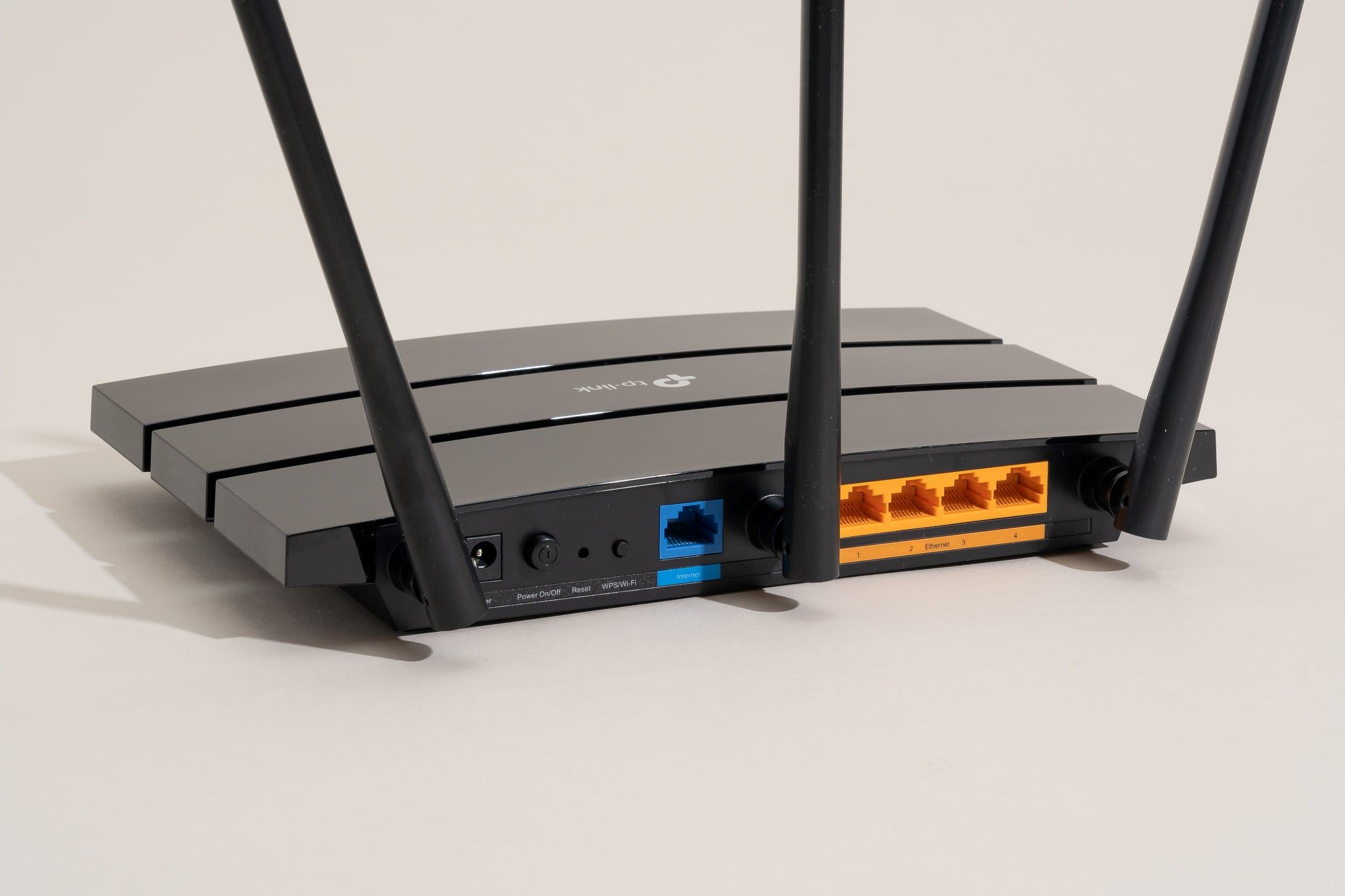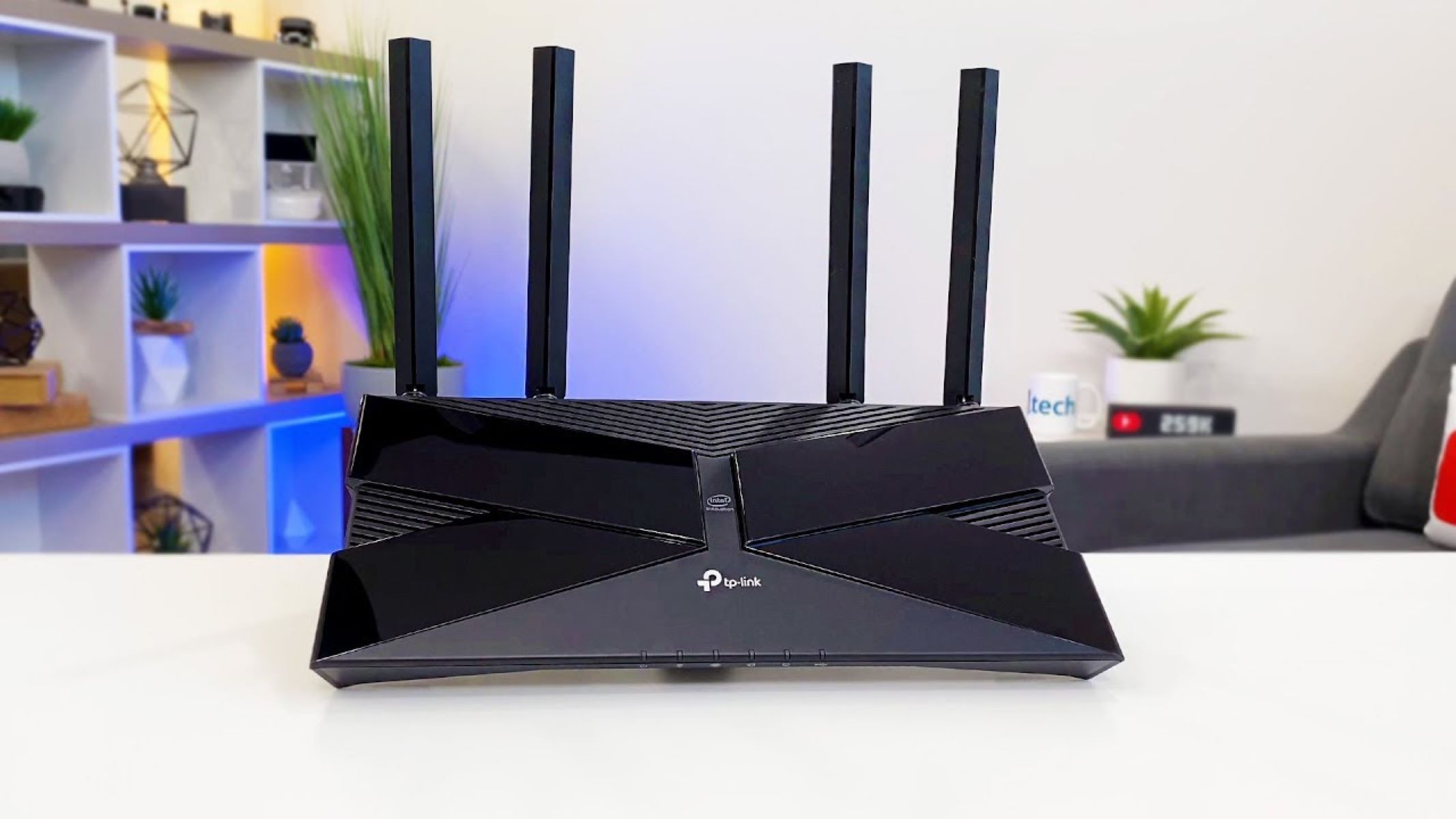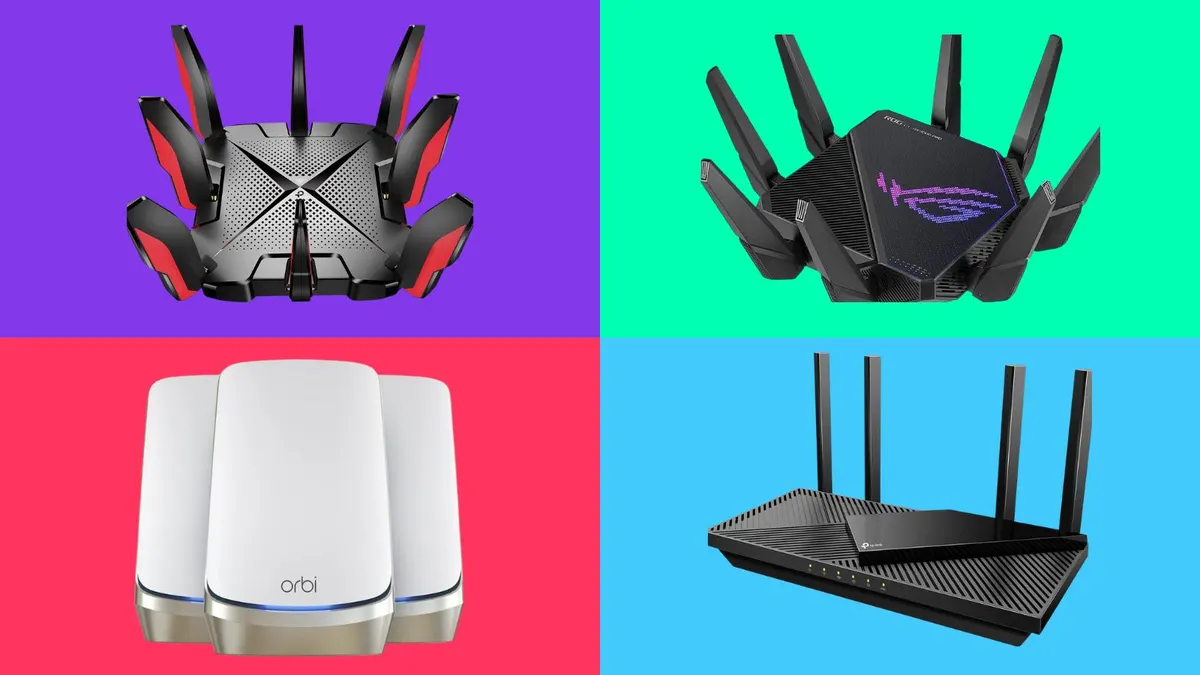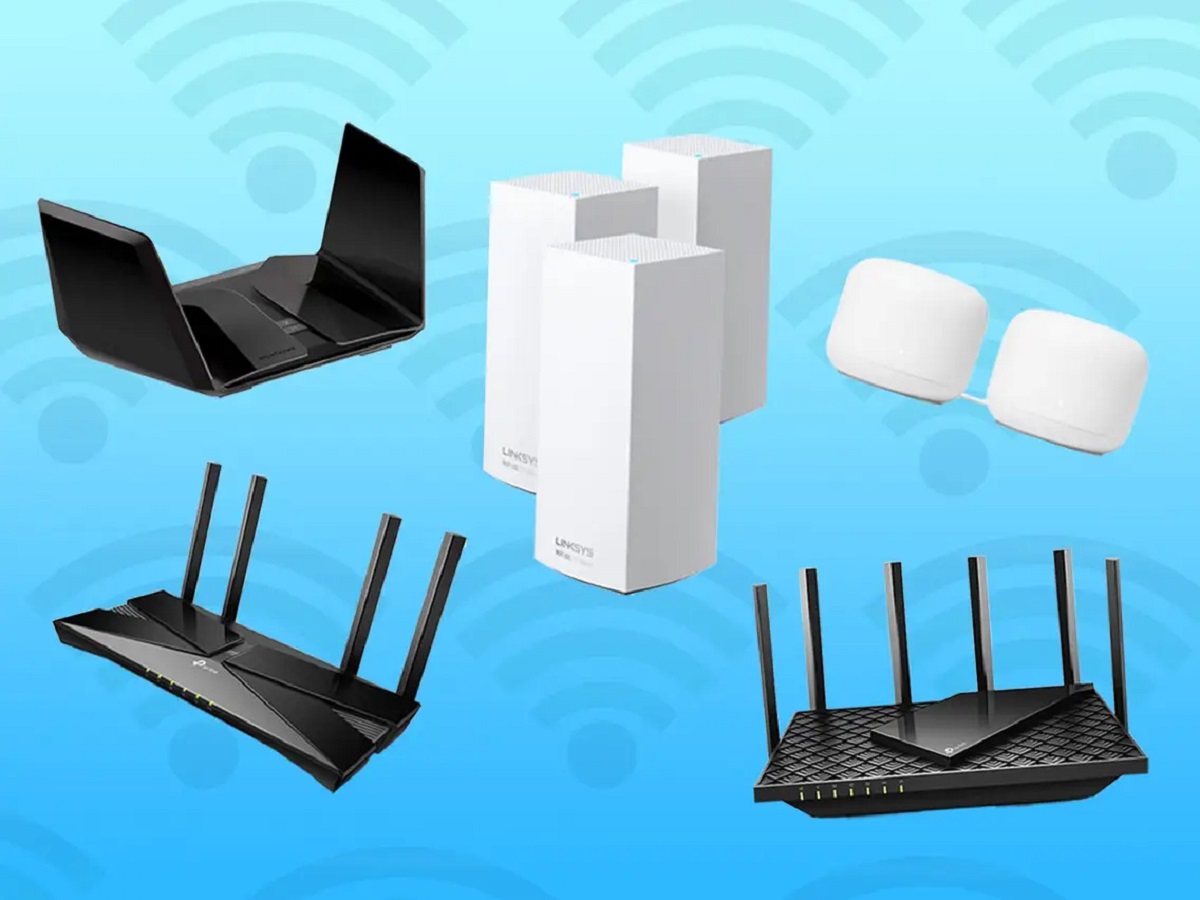Introduction
In today’s digital era, wireless internet has become an essential part of our lives. Whether it’s for work, entertainment, or staying connected with loved ones, having a reliable and fast internet connection is crucial. And at the heart of this wireless connectivity is the wifi router. But what exactly is a wifi router, and how does it work?
A wifi router is a device that enables multiple devices to connect to the internet wirelessly. It acts as a central hub, transmitting and receiving data between devices and the internet service provider.
Wifi technology has revolutionized the way we access the internet, allowing us to avoid the constraints of physical connections. With a wifi router, you can enjoy the convenience of browsing the web, streaming videos, and downloading files from any part of your home or office.
But how does a wifi router work its magic? It all comes down to a combination of hardware components, radio signals, and intelligent algorithms.
In this article, we will delve into the intricacies of wifi router technology. We will explore the hardware components that make up a wifi router, the role of the antenna in transmitting and receiving signals, and the step-by-step process of data transmission.
Furthermore, we will discuss how wifi routers select and switch between wifi channels to ensure optimal performance and how security protocols and encryption techniques are implemented to safeguard your data.
Additionally, we will take a look at common issues and troubleshooting techniques you can use when your wifi router encounters problems.
By the end of this article, you will have a thorough understanding of how wifi routers work and be better equipped to optimize their performance and troubleshoot any issues that may arise. So, let’s dive in and unravel the mysteries of wifi router technology!
What is a Wifi Router?
A wifi router is a device that serves as the central hub for wireless internet connectivity in our homes, offices, and public spaces. It enables multiple devices, such as smartphones, laptops, and tablets, to connect to the internet without the need for physical cables.
A wifi router works by creating a local network in which devices can communicate with each other and access the internet. It acts as a gateway that connects the local network to the wider internet through an internet service provider (ISP).
One of the key functions of a wifi router is to translate data between the local network and the internet. When you browse a website or stream a video on your device, the router receives the data packets and sends them to the appropriate destination. It also receives data from the internet and distributes it to the devices on the local network.
To enable wireless connectivity, a wifi router utilizes radio waves to transmit and receive data. These radio waves operate within a specific frequency range, typically 2.4GHz or 5GHz. The router’s antenna plays a crucial role in transmitting and receiving these signals.
In addition to facilitating wireless connections, wifi routers also provide a range of advanced features. They often have multiple ethernet ports to allow devices to connect via wired connections. Some routers also offer additional features like USB ports for sharing files or printers over the network, parental controls to restrict access to specific websites, and Quality of Service (QoS) settings to prioritize certain types of traffic.
Overall, a wifi router is the backbone of a wireless network, providing the necessary infrastructure to connect devices to the internet. Without a wifi router, we would be limited to using wired connections, greatly limiting our mobility and convenience.
In the next section, we will delve deeper into the basic principles of wifi technology to understand how a wifi router establishes and maintains wireless connections.
The Basics of Wifi Technology
To understand how a wifi router works, it’s essential to grasp the fundamental principles of wifi technology. Wifi, short for wireless fidelity, is a wireless networking technology that allows devices to connect to a local area network (LAN) and access the internet without using physical cables.
At its core, wifi technology relies on radio waves to transmit and receive data. These radio waves operate within specific frequency bands, which are standardized internationally. The two most common frequency bands used in wifi are 2.4GHz and 5GHz.
When you connect a device to a wifi network, it uses a wireless adapter to send and receive data through the air. The adapter communicates with the router using a protocol known as the Institute of Electrical and Electronics Engineers (IEEE) 802.11 standard. This standard defines the rules and regulations for wireless communication, ensuring compatibility between different devices.
Wifi networks are typically identified by their network name, also known as the Service Set Identifier (SSID). When you scan for available wifi networks on your device, you can see a list of SSIDs that are within range. Once you select a network and enter the password (if required), your device establishes a connection with the wifi router.
The data transmission in a wifi network occurs through data packets. When you send or receive information, it is divided into smaller packets, each with its own header containing information about the source, destination, and other details. These packets are then transmitted via radio waves from the device to the router and vice versa.
To ensure successful transmission, wifi routers utilize a technique called Carrier Sense Multiple Access with Collision Avoidance (CSMA/CA). This technique allows multiple devices to share the same radio frequency without interfering with each other. It works by having devices listen for other transmissions before sending their own, reducing the likelihood of collisions.
Furthermore, wifi networks employ various modulation techniques, such as Orthogonal Frequency Division Multiplexing (OFDM), to optimize the transmission and reception of data. These techniques enable wifi routers to handle multiple streams of data simultaneously, increasing the overall throughput and performance of the network.
Overall, wifi technology provides a flexible and convenient means of wireless communication. It allows us to connect multiple devices and access the internet from anywhere within the range of the wifi router. In the next section, we will delve into the intricacies of how a wifi router works and the hardware components that contribute to its functionality.
How does a Wifi Router Work?
A wifi router acts as a central hub that facilitates wireless communication between devices and the internet. It works by combining hardware components, intelligent algorithms, and radio waves to transmit and receive data.
When a device attempts to connect to a wifi network, it sends a signal to the nearby router. The router then authenticates the device and assigns it an IP address. This IP address serves as a unique identifier that allows devices to communicate with each other over the network.
Once the device is connected, it can start sending and receiving data packets. The router receives these packets and uses its hardware and software components to determine the destination of each packet.
The communication between devices and the router occurs through radio waves. The router’s antenna transmits radio signals carrying the data packets, which are then received by the antennas on the connected devices. This two-way communication enables devices to access the internet and exchange information with other devices on the same network.
To ensure efficient data transmission, wifi routers utilize advanced technologies such as Multiple-Input Multiple-Output (MIMO). MIMO employs multiple antennas on both the router and the connected devices to enhance signal strength, reduce interference, and improve data throughput.
Wifi routers also implement quality of service (QoS) algorithms to prioritize certain types of traffic. For example, if you’re streaming a high-definition video on your device, the QoS algorithm will allocate more bandwidth to ensure a smooth playback experience.
One of the critical factors that influence the performance of a wifi router is its frequency band. Routers can operate on the 2.4GHz or 5GHz frequency band, or both in dual-band routers. The 2.4GHz band provides better coverage and can penetrate walls easily but is more susceptible to interference from other devices. On the other hand, the 5GHz band offers faster speeds but has a shorter range.
In addition to data transmission, wifi routers also handle network management tasks. They use protocols like Dynamic Host Configuration Protocol (DHCP) to assign IP addresses to devices on the network automatically. Routers can also perform Network Address Translation (NAT) to enable multiple devices to share a single IP address when accessing the internet.
Furthermore, wifi routers often come with additional features such as firewalls, parental controls, and guest network support. These features enhance security and allow users to customize their network settings according to their specific requirements.
Overall, a wifi router plays a crucial role in establishing and maintaining wireless connectivity between devices and the internet. By combining hardware and software components with radio wave technology, wifi routers enable us to enjoy the convenience and flexibility of wireless internet access. In the next section, we will explore the hardware components that make up a wifi router and their respective functions.
Understanding the Hardware Components
A wifi router consists of several hardware components that work together to enable wireless communication and provide internet connectivity. Understanding these components can help us comprehend the inner workings of a wifi router and its capabilities.
1. Central Processing Unit (CPU): The CPU is the brain of the wifi router. It processes instructions and performs calculations to handle data transmission, routing, and other functions.
2. Flash Memory: Flash memory stores the router’s firmware, which contains the operating system and software that control its functions. It also stores configuration settings and allows for firmware updates.
3. RAM (Random Access Memory): RAM provides temporary storage for data and instructions that the router’s CPU needs to access quickly. It stores information related to active connections, routing tables, and other in-memory operations.
4. Network Interface Card (NIC): The NIC, also known as the wireless adapter, allows the router to connect to devices wirelessly. It sends and receives data packets using radio waves and handles the communication between the router and connected devices.
5. Ethernet Ports: Wifi routers often come with ethernet ports, which allow devices to connect to the router using a wired connection. These ports provide a stable and fast internet connection for devices that support ethernet connectivity.
6. Antennas: The antennas play a crucial role in transmitting and receiving radio waves. They help in improving signal strength and coverage. Multiple antennas, enabled by technologies like MIMO, enhance the data transfer rates and overall performance of the wifi router.
7. Power Supply: The power supply provides the necessary electrical energy to operate the wifi router. It may come in the form of an external adapter or built-in power supply.
8. Physical Buttons and LEDs: Wifi routers often have physical buttons and LEDs to control and indicate various functions. These include power buttons, WPS buttons for easy device setup, reset buttons, and LEDs to show the status of power, internet connectivity, and wireless activity.
9. Security Features: Wifi routers incorporate security features to protect the network from unauthorized access. These include firewalls, encryption methods like WPA2 (Wi-Fi Protected Access II), and MAC address filtering.
Each of these hardware components plays a vital role in ensuring the smooth operation and functionality of a wifi router. By working together, they establish wireless connections, transmit data, route traffic, and provide network services.
In the next section, we will focus on the role of antennas in wifi routers and how they contribute to the wireless transmission of data.
The Role of the Antenna
Antennas are a crucial component of wifi routers, responsible for transmitting and receiving radio signals. They play a vital role in establishing and maintaining wireless connectivity between devices and the router.
The main function of the antenna is to convert electrical signals into radio waves and vice versa. When a device sends data to the router, the antenna receives the electrical signal and converts it into a radio wave. The antenna then transmits the radio wave into the surrounding space.
Likewise, when the router receives a radio wave from a device, the antenna captures it and converts it back into an electrical signal that can be processed by the router’s internal components.
One of the significant factors affecting the performance of a wifi router is the strength and coverage of its signals. The design and placement of the antenna are critical in ensuring optimal signal delivery.
Wifi routers may have one or multiple antennas, depending on their specifications. Multiple antennas, known as Multiple-Input Multiple-Output (MIMO) technology, can improve the data transfer rates and overall performance of the router.
The antennas in a wifi router can be omnidirectional or directional. Omnidirectional antennas radiate signals in all directions, providing a wider coverage area. On the other hand, directional antennas focus the signal in a specific direction, allowing for a longer range and increased signal strength.
It is important to note that the signal strength and coverage of a wifi network are influenced by various factors, including the distance between the device and the router, physical obstacles like walls or furniture, and interference from other electronic devices.
To optimize the performance of the antenna and extend the range of the wifi network, several techniques can be employed. These include adjusting the position and orientation of the antenna, ensuring a clear line of sight between the antenna and connected devices, and reducing interference from other devices operating on the same frequency.
In some cases, external antennas can be added to the router to improve the signal strength and coverage in specific directions or areas. These external antennas provide more flexibility in directing and focusing the signal.
Overall, the antenna is a critical component of a wifi router, enabling the transmission and reception of signals. With careful positioning and optimization, antennas can enhance the overall performance and coverage of the wifi network. In the next section, we will explore the step-by-step process of data transmission in a wifi router.
Step-by-step Process of Data Transmission
The data transmission process in a wifi router involves several steps that enable seamless communication between devices connected to the network. Let’s explore the step-by-step process of how data is transmitted in a wifi router:
1. Device Initialization: When a device attempts to connect to a wifi network, it sends a signal to nearby routers. The router receives this signal and initiates the authentication process.
2. Authentication and Association: The router verifies the device’s credentials and ensures that it is authorized to connect to the network. Once the device is authenticated, an association is established between the device and the router.
3. IP Address Assignment: The router assigns an IP address to the device, allowing it to communicate with other devices on the network and access the internet. This IP address serves as a unique identifier for the device.
4. Data Packet Creation: When a device transmits data, it is divided into smaller packets. Each packet contains a header with information such as the source and destination addresses. These packets are then sent to the router for further processing.
5. Packet Routing: The router examines the destination address in each packet’s header to determine the most efficient path to transmit the data. It consults its routing table to make decisions about how to forward the packets.
6. Radio Wave Transmission: The router converts the electrical signals from the data packets into radio waves using its antenna. These radio waves propagate through the air, carrying the data to the intended recipient.
7. Signal Reception and Conversion: The recipient device’s antenna captures the radio waves from the router. The antenna converts the radio waves back into electrical signals that the device can understand and process.
8. Packets Reassembly: Once the device receives all the data packets, it reassembles them in the correct order to reconstruct the original data sent by the source device.
9. Data Processing and Response: The receiving device processes the data and generates a response if necessary. This response is then divided into packets and sent back to the router for transmission, following the same steps in reverse order.
10. Internet Connection: If the data transmission involves accessing the internet, the router acts as a gateway that forwards the data packets to the appropriate destination on the internet.
11. Return Path: The response data packets follow the same process of routing, radio wave transmission, and reassembly, eventually reaching the source device.
By following these steps, wifi routers enable seamless and efficient data transmission between devices on the network. These processes occur rapidly and continuously, ensuring that devices can communicate and exchange data without disruption.
In the next section, we will explore the important aspect of wifi channel selection and switching in a wifi router.
Wifi Channel Selection and Switching
Wifi routers operate on specific frequency bands, such as 2.4GHz and 5GHz, which are further divided into multiple channels. The selection and management of these wifi channels play a vital role in optimizing the performance and reducing interference in a wifi network.
Wifi channels are essentially different frequencies within a frequency band. In the 2.4GHz band, there are 14 channels, while the 5GHz band offers a wider range of channels, typically around 23 non-overlapping channels.
When a wifi router is set to automatically select the channel, it analyzes the surrounding environment to identify the least congested or available channel. This process is important because neighboring wifi networks and other electronic devices can cause interference and degrade the wifi signal quality.
Interference from neighboring wifi networks occurs when multiple routers in close proximity are using the same or overlapping channels. This interference can lead to decreased data transfer rates and a less reliable connection. By selecting a less congested channel, the router can improve the wifi network’s performance and reduce interference from neighboring networks.
In addition to neighboring networks, other electronic devices like microwaves, cordless phones, and Bluetooth devices can also operate on similar frequencies and cause interference. Switching to a less congested channel can help minimize interference from these devices as well.
Most modern wifi routers have a built-in feature called Automatic Channel Selection (ACS) or Dynamic Frequency Selection (DFS). These features continuously scan the wifi environment to identify less congested channels and automatically switch to them if necessary.
However, in some cases, manual channel selection may be required. This is particularly true in densely populated areas where several wifi networks are competing for the limited available channels. In such situations, manually selecting a channel that is not being used by other networks can improve performance.
Wifi routers also support channel bonding, which involves combining multiple channels to increase the overall bandwidth. This is commonly seen in routers operating on the 5GHz band where channels can be bonded to create wider bandwidth for faster data transfer rates. However, channel bonding may also increase the risk of interference, so it should be used with caution.
It is important to note that wifi channels are not completely isolated from each other. There is some degree of overlap between adjacent channels, which can still lead to interference. Therefore, it is recommended to select non-overlapping channels whenever possible to minimize interference.
By carefully selecting and managing wifi channels, wifi routers can optimize performance and provide a reliable and stable connection. Regular monitoring and adjustment of channels can help address interference issues and improve the overall wifi experience.
In the next section, we will discuss the important aspect of security protocols and encryption used in wifi networks to protect against unauthorized access and data breaches.
Security Protocols and Encryption
Security is a critical aspect of wifi networks to protect against unauthorized access and potential data breaches. Wifi routers employ various security protocols and encryption methods to ensure the confidentiality and integrity of data transmitted over the network.
One of the most widely used security protocols in modern wifi routers is Wi-Fi Protected Access II (WPA2). WPA2 provides robust security by encrypting the data transmitted between the router and connected devices. This encryption prevents unauthorized users from intercepting and deciphering the data packets.
WPA2 uses a symmetric encryption algorithm known as Advanced Encryption Standard (AES). AES employs a strong encryption key that is used to encrypt and decrypt the data packets. This key is unique to each wifi network and is typically generated during the initial setup of the router.
In addition to encryption, WPA2 also incorporates authentication mechanisms to ensure that only authorized devices can connect to the network. When a device attempts to join a wifi network, it must provide the correct security credentials, including a pre-shared key (PSK) or a password. This authentication process verifies the identity of the device and allows it to establish a secure connection with the router.
Another security protocol that is gaining popularity is WPA3. WPA3 offers enhanced security features and addresses some of the vulnerabilities identified in WPA2. It introduces features like individualized data encryption and protection against brute-force dictionary attacks. However, WPA3 is relatively new and may not be supported by all wifi devices and routers at this time.
It is worth noting that the effectiveness of security protocols and encryption depends on the strength of the chosen password or pre-shared key. It is recommended to use complex passwords that combine uppercase and lowercase letters, numbers, and special characters. Additionally, regularly updating the wifi network’s password adds another layer of security.
For an additional layer of security, wifi routers also offer features such as MAC address filtering and guest network support. MAC address filtering allows the router to only accept connections from devices with pre-defined MAC addresses, adding an extra level of control over network access. Guest network support enables users to create a separate network for guests, keeping them isolated from the primary network and reducing the risk of unauthorized access to sensitive data.
To stay ahead of security threats, it is essential to keep wifi routers’ firmware up to date. Router manufacturers often release firmware updates to address security vulnerabilities and improve overall performance. Regularly checking for and applying these updates helps ensure the router’s security features are up to date.
In summary, wifi routers employ robust security protocols and encryption methods to safeguard data transmitted over the network. By implementing strong security measures and keeping firmware up to date, users can enjoy a secure and protected wifi network.
Common Issues and Troubleshooting Techniques
While wifi routers are designed to provide reliable wireless connectivity, they can encounter various issues that may disrupt the network’s performance. Fortunately, many of these issues can be resolved through simple troubleshooting techniques. Let’s explore some common wifi router issues and how to troubleshoot them:
1. Slow Internet Speed: Slow internet speed can be caused by various factors, including interference, distance from the router, or outdated firmware. To troubleshoot, try moving closer to the router, minimizing interference from other electronic devices, and ensuring that the router’s firmware is up to date.
2. Intermittent Connection: If you experience intermittent connection drops, it could be due to signal interference or weak signals. Try changing the router’s channel, adjusting its placement, or adding a wireless range extender to improve signal strength and stability.
3. No Internet Connectivity: If you are unable to connect to the internet, check if other devices on the network are experiencing the same issue. If so, restart the router and modem, ensure the ISP’s connection is active, and verify correct network settings.
4. Forgotten Password: If you forget the wifi network’s password, you can access the router’s admin interface using a wired connection. From there, you can reset the wifi password or retrieve it if it is stored in the router’s settings.
5. Router Not Responding: If the router is unresponsive or frequently crashes, try power cycling it by unplugging it from the power source, waiting for a few seconds, and then plugging it back in. If the issue persists, consider resetting the router to its factory default settings.
6. Limited Range: If the wifi signals do not reach certain areas of your home or office, consider adding a wireless range extender or a mesh wifi system to extend the network’s coverage area.
7. Connection Drops When Moving Between Areas: If the connection drops when moving from one area to another, it could be due to weak signal strength in certain locations. Adding additional routers or access points strategically placed throughout the premises can help improve coverage and provide seamless roaming.
8. Security Concerns: If you suspect unauthorized access to your wifi network, ensure that you have a strong and unique wifi password, enable network encryption (e.g., WPA2 or WPA3), and consider enabling MAC address filtering for added security.
9. Router Overheating: If the router becomes excessively hot, it may lead to performance issues or even hardware damage. Ensure that the router is placed in a well-ventilated area and not covered by objects that can block airflow.
10. Outdated Firmware: Outdated router firmware can cause various issues. Check the manufacturer’s website for firmware updates and follow their instructions to keep your router’s firmware up to date.
By applying these troubleshooting techniques, you can resolve many common wifi router issues and restore the network’s functionality. If the problem persists or is beyond your ability to troubleshoot, contacting your router’s manufacturer or an IT professional can provide further assistance.
Conclusion
Wifi routers are indispensable devices that enable wireless internet connectivity and connect multiple devices to the internet. Understanding how wifi routers work and the core principles behind their operation can help us optimize their performance and troubleshoot common issues.
Throughout this article, we explored the basics of wifi technology, delving into the hardware components that make up a wifi router and the role of the antenna in transmitting and receiving radio signals. We also discussed the step-by-step process of data transmission, covering authentication, IP address assignment, and packet routing.
Moreover, we examined the importance of wifi channel selection and switching to reduce interference and optimize performance. We learned about security protocols like WPA2 and encryption methods used to protect data transmitted over wifi networks. We also explored common wifi router issues and troubleshooting techniques to address them effectively.
By applying the knowledge gained from this article, users can improve their understanding of wifi router functionality, allowing them to optimize the performance and reliability of their home or office networks. Whether it’s adjusting router placement, selecting the appropriate channel, or updating firmware, taking proactive steps can lead to a smoother and more efficient wifi experience.
Remember, maintaining a secure wifi network is crucial to protect sensitive information and prevent unauthorized access. Utilizing strong passwords, enabling encryption, and keeping firmware updated are all steps that contribute to a secure wifi environment.
As technology continues to evolve, wifi routers will play an increasingly vital role in connecting our devices to the digital world. By staying informed about new developments and best practices in wifi networking, we can adapt and make the most of this essential technology.
So next time you connect to your wifi network or troubleshoot an issue, remember the intricate workings of your wifi router and the steps you can take to enhance your wireless experience.







